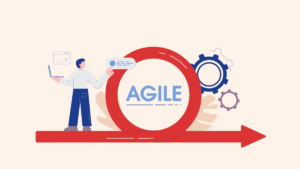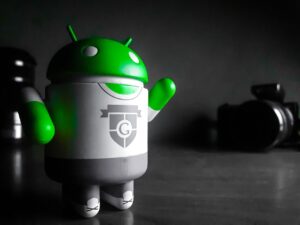Accept Cookies & Privacy Policy?
We use cookies to ensure that we give you the best experience on our website. If you continue to use this site we will assume that you accept and understand our Privacy Policy, and our Terms of Service.
IoT testing primarily involves end-to-end functional and integration testing that’s significantly relevant to the specifics of the distributed IoT architectures accompanied by performance testing checking the application strength and tenacity while handling large volumes of streaming data, alongside optimal security testing at all application interfaces, gateways, and all inter-connected device levels.
Here’s a lineup of an IoT testing team that involves:
A successful IoT solution delivery requires understanding the subtle aspects of all IoT device modules and architecture-specific solutions offering clients and stakeholders a fully comprehensive IoT testing service suite.
1. Design IoT application testing process
A QA process manager is assigned as early as the requirements specification stages to ensure all IoT functional requirements are designed in a highly testable way. Typically, the requirements are drawn in the form of user stories.
The QA process manager should then decide upon the deployed QA team and the IoT development team’s degree of interdependencies and mutual collaboration required for ensuring relevant test cases’ prioritization, efficient defects management, and regression testing execution.
Then, the QA process manager should possibly and carefully consider all possible testing risks and design a mitigation plan for the project. The probable risks there can be are:
.
2. Preparing for IoT testing
Preparation for the IoT application testing process differs according to the sourcing model opted for in-house testing or outsourced testing.
The assigned QA manager designs an overall IoT test strategy and plan, including effort estimation. As an IoT system’s architecture is prone to changes, the QA manager needs to regularly revise and update the test artifacts accordingly.
Then, the manager assembles an IoT testing team or teams.
It, however, may require several testing teams to cater to different IoT application modules. The actual number of testing teams deployed will depend mostly on the application’s architecture and complexity.
Besides saving time- and data-intensive resources, alongside recurring repetitive test cases execution, an IoT testing project requires a balance of both manual and automated testing. A separate team should be deployed to take over automated testing.
Note
Automation integration and regression testing with critical functional test cases, along with performance testing are always inherently automated. Still, IoT security, usability, and the majority of functional test cases are performed manually.
Validates the functionality of:
Validates:
Validates:
Performance testing for IoT applications
An IoT test plan can include performance testing to:
Note
Not all performance testing tools are meant for IoT-specific communication protocol standards (e.g. MQTT, XMPP, CoAP, SOAP), performance testers carefully consider the compatibility of the IoT app’s tech stack alongside the capabilities of the preferred performance testing tool.
The Key components of an IoT system are
1) Sensors
Sensors gather data from connected environments for real-time input processing, and they can be systematically chosen or further modified based on the requirement. Targeted sensors like environment detectors are used for specific utility purposes, whereas devices like beacons and QR codes can be embedded for multiple applications. Sensors are essential in the smooth running of all IoT processes as multiple sensors can get installed on an inter-connected device and collect different aspects of the necessary data likewise.
2) Networks
As the data is further sent to the cloud, it needs a way to get there. The sensors/devices can be connected via a variety of methods including cellular, satellite, WiFi, Bluetooth, low-power wide-area networks (LPWAN), or through a gateway/router or connecting directly to the internet. Each option has its tradeoffs between power requirements, range, and bandwidth. Choosing the right network connectivity option comes down to the specific IoT application in question, however, they all come together to accomplish the same task of connecting data to the cloud.
.
3) Applications
IoT leverages an application-based user interface to make sure the collected data and information are ready and practical for consumption by a targeted demographic in some way. This could be by updating the processed information on an application dashboard or alerting the user via any set and viable notification, as real-time system monitoring occurs. IoT enables provisions for applications to conduct live system monitoring using a mobile phone or a web browser app plugin.
4) Backends (data center)
Computing software and big-data analytics further process all inputs for the end user. For instance, detecting unauthorized activity within a defined parameter. As the signals get sent to the user via alert notifications to the system applications and software.
IoT is a connection of mutually identifiable embedded devices within the same existing Internet infrastructure. In simple words, IoT is an emerging era of “Smart”, connected products that can ‘ talk’, communicate and seamlessly transfer real-time data while uploading it to the cloud.
Testing for IoT devices broadly revolves around Security, Analytics, Devices, Networks, Processors, Operating Systems, Platforms, and Standards.
Includes the types of testing schematics followed for all IoT devices and applications –
Compatibility Testing
As multiple devices can be interconnected via the IoT ecosystem. across varied software and hardware configuration ranges. Risking a complete data transmission failure or system de-synchronization, requiring the need to perform thorough compatibility testing for the entire IoT system.
Usability Testing
User interaction with different device form factors requires usability testing for evaluating the product or devices by testing it along with representative users. The goal is to identify usability issues, collect qualitative and quantitative data, and determine the participant’s user satisfaction with the product/device.
Data Integrity Testing
Checking the data integrity is crucial as a large amount of data is generated and transferred in such applications.
Reliability and Scalability Testing
Reliability and Scalability involve the simulation of sensors utilizing virtualization tools and technologies.
Security testing (Non-functional)
In the IOT ecosystem, it is important to validate users via authentication, deploying data accessibility encryptions and privacy controls as part of security testing.
Performance Testing (Non-functional)
Performance testing is deployed creating a strategic approach for developing and implementing a well-integrated end-to-end IOT testing plan.
Deploying efficient IOT Software Testing Experts- Trained in all Industry Standard Practices
Gray Box testing integration with IoT testing services allows the designing of effective test cases. Understanding the OS, architecture, third-party hardware, connectivity, and device limitations.
Real-Time Operating System is essential in delivering scalability, modularity, connectivity, and security, especially for IoT.
IoT Testing Services need to be automated post-sprint releases as the product moves toward stability.
Other testing services you must opt for along with IoT Testing include –

I’ve been in the Agile trenches for years now—coaching teams, facilitating sprints, navigating the choppy waters of transformations that promised the moon but barely delivered a sprint review. If there’s one thing I’ve learned, it’s that Agile is like water—it evolves, it adapts, and sometimes, it drowns you if you’re not prepared.

So picture this: You’re the air traffic controller of a chaotic airport where the planes (developers) don’t always listen, the passengers (stakeholders) want to change destinations mid-flight, and the weather (unforeseen blockers) is always unpredictable.

Imagine a world where testing is no longer a bottleneck. No more endless cycles of manual effort, no more missed defects due to human fatigue, and no more panic at the eleventh hour before a major ERP rollout.

Imagine a world where testing is no longer a bottleneck. No more endless cycles of manual effort, no more missed defects due to human fatigue, and no more panic at the eleventh hour before a major ERP rollout.

Let’s talk about GenAI and testing in 2025—the wild west of technology where machines are not just smart, but scary smart. GenAI (that’s Generative AI for the uninitiated) is running the show everywhere. It’s writing poetry, designing ads, debugging code, and probably plotting to take over my job as I write this blog.

Ah, 2024—you’ve been a year, haven’t you? For us at Thought Frameworks, this year wasn’t just about running the usual QA/QE playbook. Nope, we went full throttle into the future—tinkering, testing, and transforming everything from ERP systems to the ever-evolving world of SAP, GenAI, and security testing.
Accept Cookies & Privacy Policy?
We use cookies to ensure that we give you the best experience on our website. If you continue to use this site we will assume that you accept and understand our Privacy Policy, and our Terms of Service.
| Cookie | Duration | Description |
|---|---|---|
| cookielawinfo-checkbox-analytics | 11 months | This cookie is set by GDPR Cookie Consent plugin. The cookie is used to store the user consent for the cookies in the category "Analytics". |
| cookielawinfo-checkbox-functional | 11 months | The cookie is set by GDPR cookie consent to record the user consent for the cookies in the category "Functional". |
| cookielawinfo-checkbox-necessary | 11 months | This cookie is set by GDPR Cookie Consent plugin. The cookies is used to store the user consent for the cookies in the category "Necessary". |
| cookielawinfo-checkbox-others | 11 months | This cookie is set by GDPR Cookie Consent plugin. The cookie is used to store the user consent for the cookies in the category "Other. |
| cookielawinfo-checkbox-performance | 11 months | This cookie is set by GDPR Cookie Consent plugin. The cookie is used to store the user consent for the cookies in the category "Performance". |
| viewed_cookie_policy | 11 months | The cookie is set by the GDPR Cookie Consent plugin and is used to store whether or not user has consented to the use of cookies. It does not store any personal data. |
Ready for a Quality Software?
Let’s Dig Deep Into Your Thought!